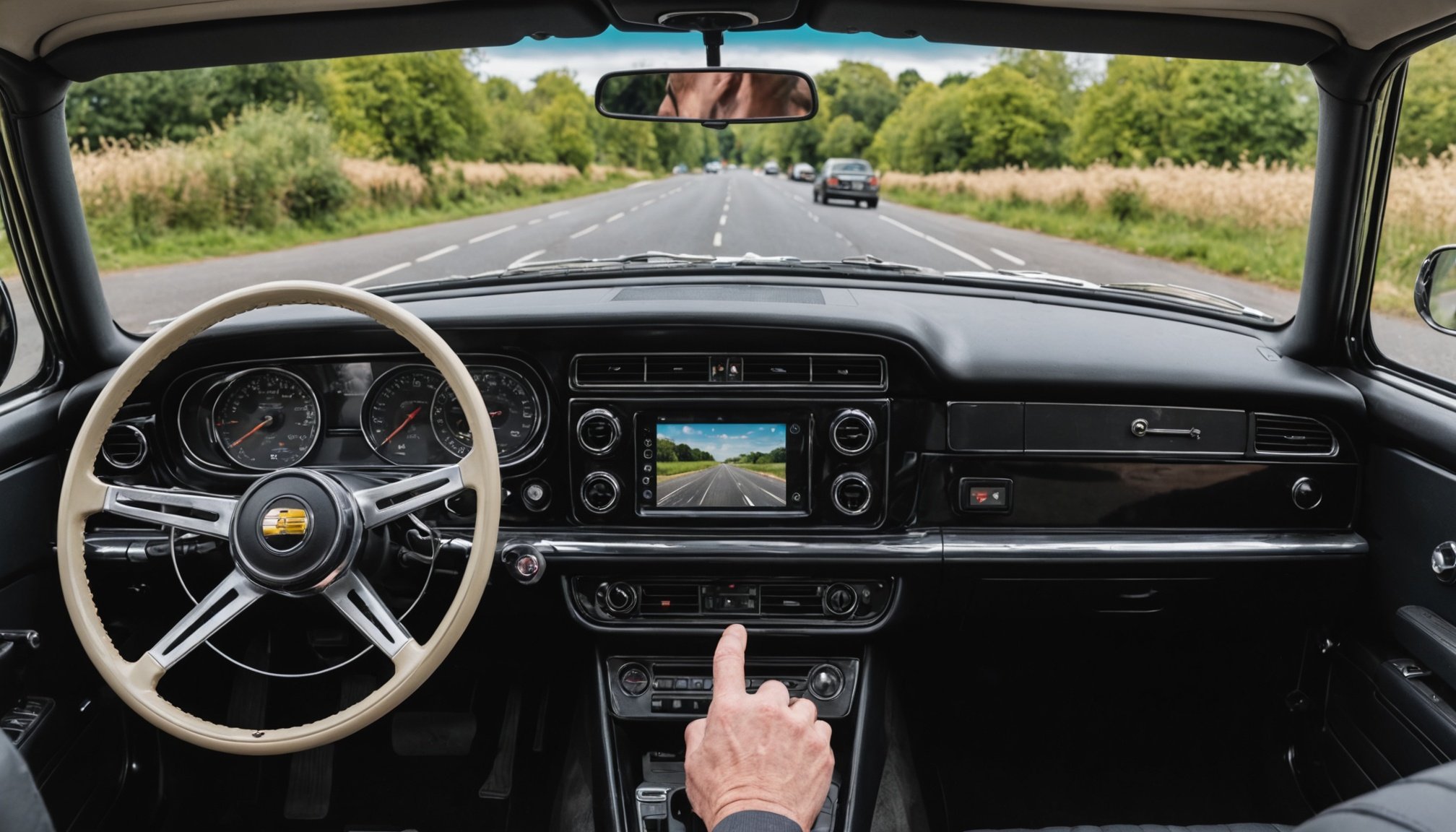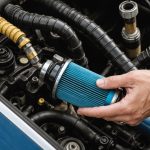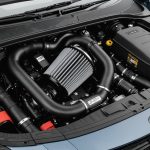Legal Requirements for Installing Backup Cameras in Classic Cars
In the UK, road safety regulations address the installation of backup cameras, offering guidance on their use in both modern and classic vehicles. While these devices aren’t legally required for classic cars, including them can enhance safety and assist in mitigating common visibility issues. However, when it comes to legal installation, classic car owners should be aware of specific considerations.
Classic vehicles often have unique construction, affecting how components like backup cameras can be secured. For them to be legally installed, these cameras must not obstruct driver visibility or alter the car’s structural integrity. It’s crucial to ensure the camera system complies with UK road safety standards without interfering with the classic car’s unique features.
In parallel : Boosting Throttle Response: Top Strategies for Optimizing Naturally Aspirated Engines in the UK
Failure to adhere to these requirements could result in penalties. These might include fines or a mandate to remove the non-compliant equipment. Consequently, classic car enthusiasts should consider consulting with a professional who understands both legal and technical aspects of installing backup cameras. This ensures compliance and maintains the vehicle’s authenticity, thereby avoiding any potential legal repercussions. By keeping these factors in mind, owners can enhance their driving experience while staying within legal bounds.
Tools and Materials Needed for Installation
When it comes to backup camera installation tools, having the right equipment is crucial for both safety and performance. Essential tools include screwdrivers for precise component assembly and wire strippers for clean and accurate connection of wires. These tools ensure that the installation is not only effective but also minimises errors during the process. It is also beneficial to have a multimeter on hand. This device helps verify connections, ensuring that the wiring is functioning correctly before final sealing.
Have you seen this : Navigating Car Accident Claims: Expert Strategies for Multi-Party Incidents in the UK
In addition to tools, recommended materials such as wiring harnesses and connectors play a significant role. A good quality wiring harness provides a solid and reliable connection, which is essential for the camera’s consistent performance. Likewise, premium connectors prevent signal loss and avoid potential short circuits, enhancing overall system longevity.
Using quality products during the installation process is of paramount importance. High-grade backup camera installation tools and materials not only contribute to smooth installation but also ensure long-term safety and functionality. Investing in robust tools and materials reduces the chances of malfunction and enhances user experience, making daily driving safer and more convenient.
Choosing the Right Backup Camera
Selecting a compatible backup camera for classic cars involves understanding your vehicle’s specific needs. When exploring the market, consider the types of backup cameras available, their features, and the brands with positive reviews.
Types of Backup Cameras
Backup cameras generally fall into three categories: surface mount, license plate, and flush mount. Each type offers distinct advantages for classic cars. Surface mount cameras are versatile and can be positioned anywhere, offering flexibility. License plate cameras are easily installed and do not require drilling, preserving the vehicle’s original aesthetic. Meanwhile, flush mount cameras provide a discrete look, ideal for those who prefer minimal visibility.
Features to Consider
Key features to enhance visibility and usability include wide viewing angles, night vision capabilities, and parking guidelines. Wide viewing angles provide comprehensive coverage, reducing blind spots. Night vision is essential for low-light conditions, aiding safer parking during nighttime. Parking guidelines assist in gauging distances, facilitating smoother maneuvers in tight spaces.
Recommended Brands
Brands recognized for their reliable, compatible backup cameras for classic cars include Garmin, Pyle, and Auto-Vox. These brands provide a combination of quality, ease of installation, and user-friendly interfaces, ensuring a seamless integration with your vehicle and enhancing your driving safety.
Step-by-Step Installation Process
When installing a backup camera in a classic car, a well-defined process ensures success. Begin with thorough planning. Identify suitable locations for the camera and monitor. Consider visibility and structural integrity. Gather necessary tools like a drill, wires, and connectors.
Next, proceed to wiring. This phase is crucial for functionality. Connect the camera to the reverse light circuit, so it activates when reversing. Use appropriate wire gauges to prevent malfunctions. Consider incorporating visual aids like wiring diagrams to clarify connections.
Moving to mounting, fit the camera at the selected location. Ensure it is secure and aligned correctly. Adjust the angle for optimal rear-view coverage. Often, misalignment leads to skewed images.
Common installation mistakes involve incorrect wiring, poor mounting, and insufficient planning. Missteps in wiring can lead to device failure, while faulty mounting affects camera stability. Avoid these by referring to detailed instructions and seeking expert guidance if necessary.
A successful installation balances precision and understanding of classic car mechanics. With careful attention to installation phases, installing a backup camera can enhance safety without compromising the vehicle’s original style.
Testing the Backup Camera
Ensuring the backup camera functionality is crucial for safety and usability. Begin by confirming the camera’s alignment and visibility. This involves positioning the camera to provide a comprehensive view of the rear, typically capturing the bumper’s edge and extending outwards for optimal coverage. Ensure the camera is centered and level to prevent skewed images.
Next, assess the importance of a clear view before finalising installation. This can be achieved by testing the camera under various conditions, such as different lighting and weather scenarios, to ensure consistent performance. Use the display screen to identify any obstructions or blind spots that might compromise safety.
Troubleshooting common issues during testing is an essential step. If the image appears blurry or distorted, inspect the camera lens for dirt or damage, and clean if necessary. Connectivity problems may arise due to loose wiring or interference; verify all connections are secure and shielded from potential interference sources. By rigorously assessing these aspects, you ensure the backup camera provides reliable assistance during vehicle operation.
Challenges and Solutions
Retrofitting classic cars with a backup camera can present several installation challenges. One of the most common issues is integrating the camera system with older automotive electrical systems. Wiring can be outdated, making it difficult to connect new technology without causing interference or damage.
Location is another key challenge; finding a suitable spot for the camera that does not compromise the vehicle’s aesthetics can be tough. For instance, older bumpers may not have appropriate mounting spaces, requiring custom solutions.
To overcome these hurdles, a few strategies can be employed. Begin by consulting your vehicle’s wiring diagrams and electrical schematics to plan the integration carefully. Using an aftermarket wiring harness designed specifically for older models can simplify connections.
Consider enlisting professional help for a seamless installation and prevent potential errors. Alternatively, online forums and how-to videos can offer support and guidance for DIY enthusiasts.
For those keen on tackling the installation themselves, investing in quality tools and materials can ensure better outcomes. Follow detailed guides or seek advice on specific online communities dedicated to classic car restoration to address unique challenges.
Frequently Asked Questions
Addressing backup camera installation FAQs is crucial for both compliance and functionality. One pressing question often revolves around the legal aspects: “Is it mandatory for all vehicles to have a backup camera?” The answer is, since May 2018, U.S. regulations require all new cars to include backup cameras. However, older models are not legally bound to retrofit one.
Technically, installing a backup camera can be complex. One may wonder, “Do I need a professional for installation?” While not mandatory, professional installation ensures camera alignment and optimal performance. Missteps during DIY setups can lead to incorrect views, compromising safety.
Maintenance and usage over the long term are also common concerns. For effective maintenance, regularly check the camera for dirt and ensure the lenses are free from obstructions. An often-overlooked tip is to periodically update the camera’s software if applicable, to enhance performance and security features. These aspects support continued optimal use and compliance with vehicle safety standards, assuring drivers of their system’s longevity and reliability.











